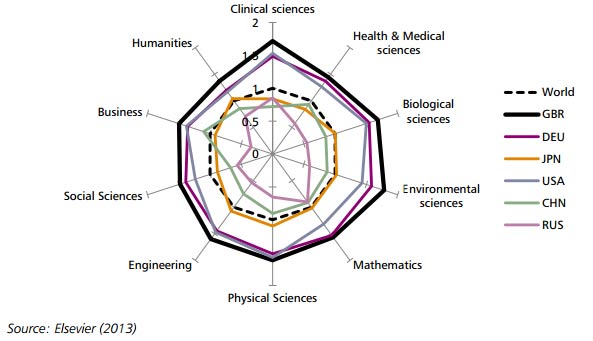After several weeks of waiting and delay, the much anticipated Government Science and Innovation strategy statement was finally released on the 17th December. A collaborative effort between Greg Clark (Minister for Universities, Science and Cities), Vince Cable (Business, Innovation and Skills Secretary), and George Osborne (Chancellor of the Exchequer), this document entitled ‘Our plan for growth’ was initially supposed to be published alongside the Autumn Statement. Informed by what the Guardian describes as “an unusually broad public consultation”, the strategy had received much ministerial plugging in the preceding months, so the delay in publication of the document and lack of publicity on its ultimate release has inevitably provoked some criticism and speculation.
Since publication, the document has had a largely lukewarm response, with commentators praising its recognition of the scientific challenges faced by the UK and its enthusiasm for science, but noting that there is relatively little new content. A pledge is made to examine resource spending on science in the 2015 Spending Review, but few further funding commitments are made beyond those announced in the Autumn Statement. The statement also still stops short of a commitment to ring-fence the science budget, which is a continuing cause for concern across the science community. Some have also noted that for those outside of the STEM disciplines, much of this statement has limited relevance. But, what does this document mean for the environment, and how does environmental science fare?
Environmental science in the strategy
The intended focus and key message of this strategy is on a ‘plan for growth’. In their foreword the Ministers presenting the strategy talk about both the big opportunities and big challenges for science in “difficult times”. Given the sentiment that we must support innovation and science to deal with these challenges and promote jobs and economic growth, environmentalists will be disappointed at the absence of any more than passing references to green or sustainable growth. Indeed, a few notable exceptions withstanding, environmental issues are notable by their absence in this document. Those announcements which may be of relevance to the environmental science sector are summarised below:
-
Nuclear power – the document restates the government’s support for various partnerships promoting research in the nuclear energy sector, which they believe can form an important (low carbon) part of a sustainable energy mix.
-
Ultra Low Emission Vehicles (ULEVs) – it is noted that the development of this technology is essential for “continued sustainable mobility” and the document outlines government support of £900 million between 2010 and 2020 for ULEVs, including money for Research and Development as well as incentives for uptake.
- Shale gas – this government has made its positive attitude to fracking clear in the past. Here, seemingly recognising public uncertainty about this practice, they pledge £5 million for a fund to provide independent evidence to the public about the robustness of the existing regulatory regime
Throughout the document, various figures are reproduced from an Elsevier (2013) report for BIS (International Comparative Performance of the UK Research Base - 2013) which illustrate the state of UK science. One of these figures (see below), which shows the field-weighted citation impact of various research fields in the UK and comparator countries, demonstrates the high quality and impact of environmental science research in the UK, not just in comparison to other countries, but also to other research fields in the UK.
Field-weighted citation impact for UK and comparators across research fields in 2002 and 2012

Reproduced in 'HM Treasury and Department for Business, Innovation and Skills (2014) Our plan for growth: science and innovation'
It is disappointing that the clear potential of the environmental sciences to contribute to sustainably meeting ‘big challenges’ has not been recognised with clearer support or funding in this statement, despite the sentiments expressed in its opening pages...
"Seven billion humans can only live on this planet because we have modified our environment by the application of science, engineering and technology. To sustain our way of life and improve it, we need to continue to develop and apply all of the sciences."
Other announcements
The clear assertion made in this document regarding the importance of good scientific advice to government policy-making is positive. There is a recognition of the importance of scientific evidence to policy-making in government departments outside of the traditional science budget. Environmental science can contribute to good decision making in a range of policy areas (Defra, DECC, DfT to name but three departments), so measures to improve the process by which R&D is funded by government in these areas is also a positive step.
One surprise announcement in this document was that the Government is launching a review of the research councils by Sir Paul Nurse, President of the Royal Society. This is unexpected as a review of the functioning of the seven research councils was only published in April 2014 and no major concerns were raised. Although this could be a constructive opportunity, some are nervous that it may be an attempt to gain more political control over the science budget and point out the importance of ensuring that the Haldane principle (decisions about what and how research is done, and by who) is upheld.





